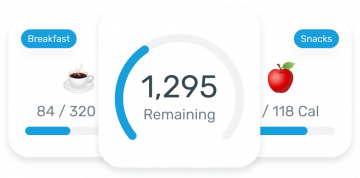
What food should you eat for COVID. This question is often difficult for many people. It can be easy for you to feel overwhelmed and have to stop eating. Do you feel like this? Take our food quiz to see the results. Once you have all the answers, you are ready to start cooking. But what if you're still unsure? There are solutions!
The Pritikin Diet emphasizes whole, minimally-processed foods. Noting that "CAUTION" or "STOP foods have been linked to higher obesity risk is important. These types of foods should be avoided in order to maintain your best health. These foods can cause weight gain, diabetes, as well as other health problems. People with diabetes will find the Pritikin Diet an excellent choice.
There are four levels to the food pyramid: "good", "bad" and "excellent". The same applies to macronutrients like protein and fibre. It is much easier than you might think to choose the right food. Understanding the importance of variety in your diet is also helpful. There is no such a thing, "too many of a good thing." Choose foods that have high fiber and lower fat. These foods are a great way for you to improve your health, and prevent chronic diseases.
If you love certain foods, there is no reason to avoid them. Instead, eat the same amount of food every day. You will feel healthier and have more energy. Keep in mind that the food pyramid is just a guideline. It's a guideline. It's possible to adjust your diet according to your personal preferences.
Fruits and vegetables are another important part of a healthy diet. Apart from avoiding unhealthy fats, you should eat two to four meals a day of fruit and vegetable. They are low-calorie, and contain a lot nutrients and fiber. High fiber fruit and vegetable combinations are especially good for your health. Don't forget vegetables! This can help you adhere to a healthy lifestyle.

A varied diet is essential for a healthy diet. Your diet is made up of different food groups. A healthy meal should include both fruits and vegetables as well as a protein-rich food. Consume at least three servings of whole grain daily. For your health, it is a good idea that you eat at least three servings per day. To give an example, three pieces of bread should be consumed if you eat one loaf. A cereal should contain at least half a cup worth of cooked grain. One ounce of pasta is one portion.
You should also eat foods high in folate and omega-3 oils. These nutrients are crucial for brain health. Insufficient nutrition can cause depression, fatigue, and even insomnia. You don't have to eat fast food if you want to look good. It's important to be aware of what foods are best for your health. It's possible to get the best nutrition if you eat a variety.
It is important to choose dairy products with care. One cup of milk and 1.5 ounces cheese is considered a healthy serving. A serving is one portion of dairy products. You can choose reduced-fat cheese or milk if cholesterol is a concern. Alternatively, you can replace sour cream with yogurt. There's no reason to be concerned as long as you get enough fibre.

Protein is crucial for healthy living. It builds muscle and keeps your body strong. You should eat lean meat, fish, eggs, nuts, and seeds to get sufficient protein. Additionally, protein contains the B vitamins B6 and B12, which are crucial for the proper functioning of your brain. If you don't eat these foods, you're more likely to experience mood swings and lose your appetite.
FAQ
How Much Does It Cost to Study Culinary Arts?
There are many factors that influence the cost of learning culinary arts. A four-year degree usually costs around $40,000. On the other hand, a two-year associate's degree may cost less than $5,000. Tuition costs vary depending on which program you choose. The prices charged by private institutions are generally higher than the public.
Is there any special equipment that is required to cook?
No, you don't need any special equipment to learn to cook. However, having the right tools can make cooking easier. For example, you could use a knife instead of a fork to eat pasta or a whisk instead of a hand mixer to whip egg whites into stiff peaks. Having the right tools makes cooking less intimidating and allows you to start faster.
Which career path is best for someone who wants a career as a chef or chef? How can I start my career as a chef?
As an apprentice, you can start your journey to becoming a chef. Apprenticeships are a way to earn a living while you learn. You can apply to become a sous-chef after you have completed your apprenticeship. Sous chefs supervise cooks and assist them with tasks like making salads and desserts. They are also responsible for the overall operation of the restaurant.
How do I get hired as chef?
To get a job as chef, you must first complete a culinary arts degree. Next, you should join a professional association such as the American Culinary Federation (ACF). The ACF offers certification exams and networking opportunities.
Do I have to go to culinary school in order to be a professional chef?
No. Many chefs learned their craft on their own. Some chefs even attended culinary school to gain more experience. Many chefs prefer to attend culinary school for the increased opportunities to learn and grow as professionals. Culinary schools offer students hands-on training, which helps them build valuable skills and improve their cooking knowledge.
Statistics
- You'll be amazed that over 90% of CIA students receive scholarships and grants to finish their culinary studies. (ischoolconnect.com)
- According to the BLS, chefs earn $58,740 a year. (learnhowtobecome.org)
- under 10 Kids have been taught that there is special food just for them, and Fiese says that 10 percent of kids will throw a tantrum if they don't get the food they want. (washingtonpost.com)
External Links
How To
How to make a perfect eggroll
Omelets are my favorite breakfast dish. But how do they turn out so perfectly? I have tried many different recipes and methods, but none of them work. I have some tips and tricks to help you make delicious, fluffy omelets every single morning.
We should first know that eggs are very temperamental ingredients when making omelets. Eggs must be purchased fresh, preferably organic, and kept chilled until ready for cooking. They must be kept cool, otherwise the whites will not form properly and the yolks may become runny. This will make your omelets appear strangely colored. If you want to make omelets right away, it's best not to use eggs that are too cold.
Another tip is to separate your egg before adding it into the pan. The yolk and white should not be mixed together as this can cause the omelet's curdle.
You could end up burning the bottom half of the egg if the egg is added directly to the heat source. Instead, place the egg in the microwave for 10 second before you put it in the skillet. The microwave heat cooks your egg just right, without it becoming too soft.
Next, let’s talk about mixing the egg. When you mix eggs together, you want to beat them well. Turn the bowl upside down and grab the whisk to do this. Next, shake the bowl vigorously. This allows the air to be whipped and the egg to be mixed thoroughly.
The fun part is now - adding the milk to the mixture. First, pour half of the milk into the beaten eggs and then fold the eggs gently into the remaining milk. Do not be alarmed if there are still egg streaks visible. Once the omelet flips, these streaks will disappear.
After you have folded your eggs, heat up the oil on medium heat. Wait for it to get hot. Once the oil has gotten hot, add 1/4 cup of butter and swirl it around so that the entire pan is coated. Carefully open the pan's lid and add salt to the pan. A pinch of salt will prevent your omelet from sticking in the pan.
Once the omelet forms, cover the pan again. Let the top side set completely. Flip the omelet upside down or with a spatula. Cook the opposite side for another minute. Serve immediately after removing the omelet from its pan.
This recipe is best made with whole milk. However, it can also be used with skimmed milk.